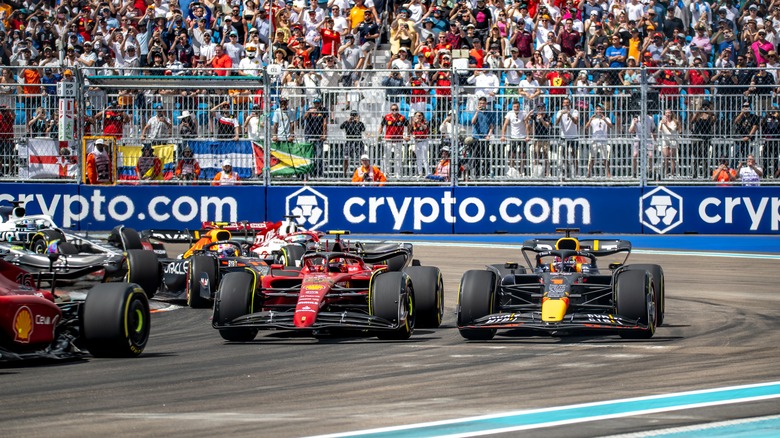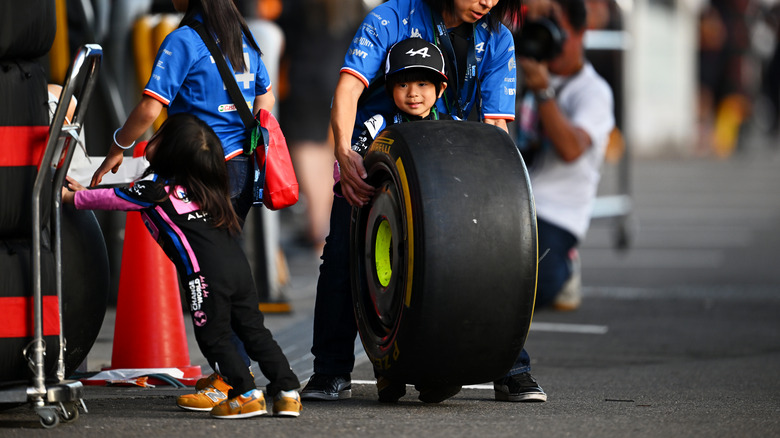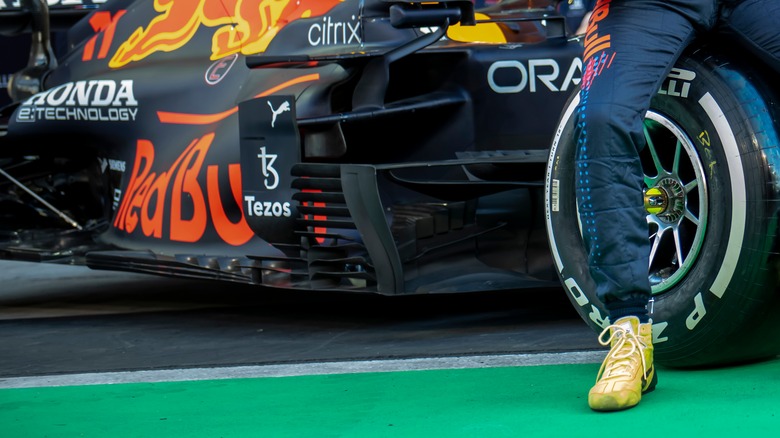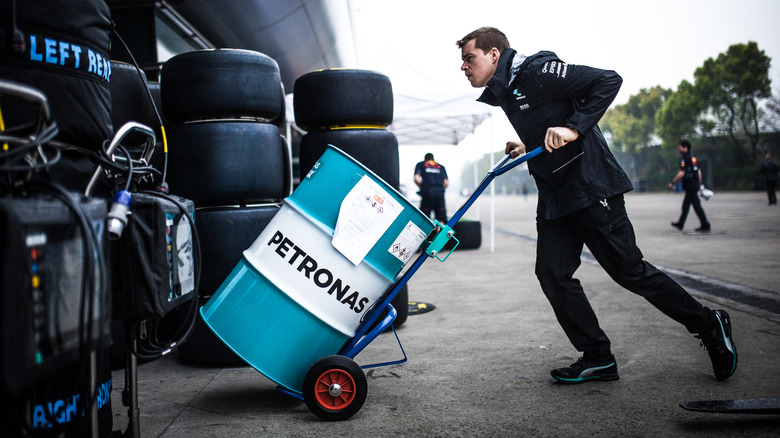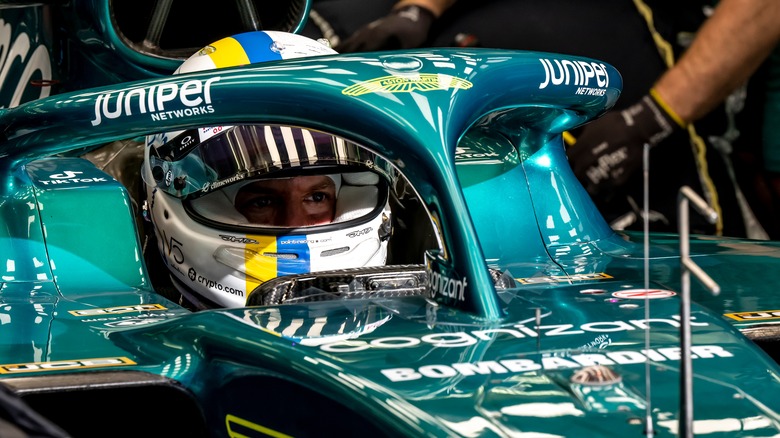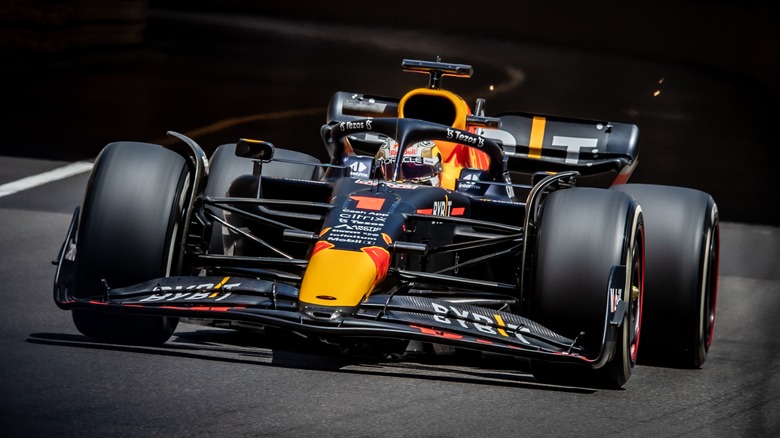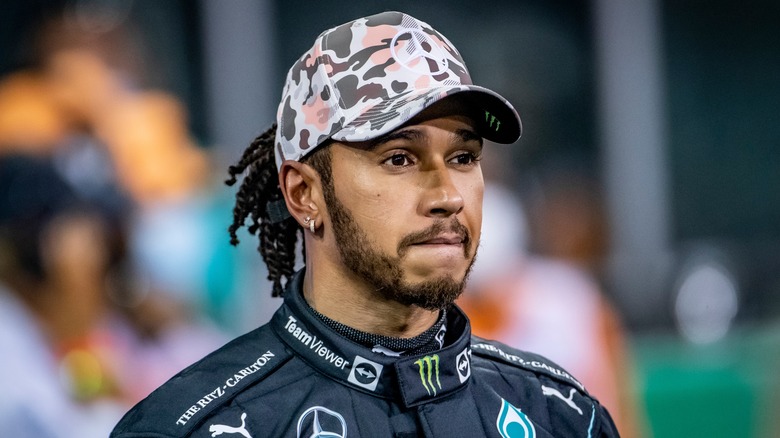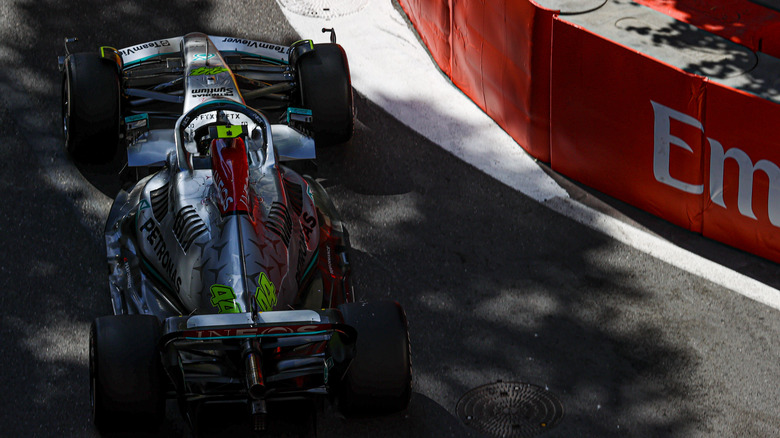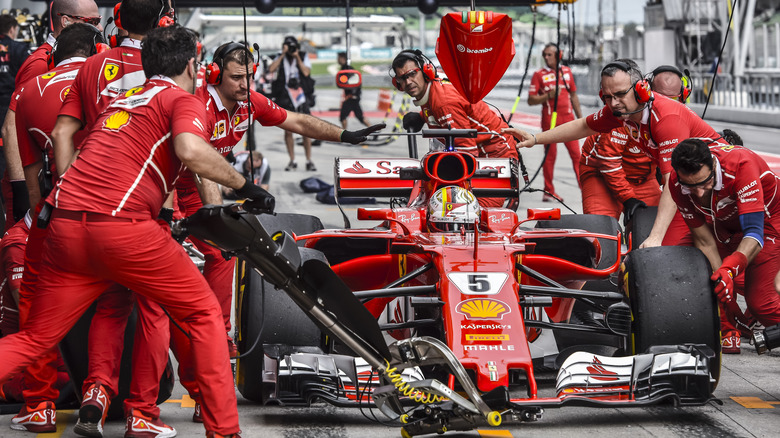Everything That Has Changed For F1 In 2022
Formula One is a continuously evolving sport. If you put a vintage F1 car from the 1950 season, alongside one of the iconic racing cars of the 1970s, and stuck a 2022 F1 car next to that, you would clearly see how much the design has changed over the years. Some of those design choices have made cars faster and more efficient. Our understanding of aerodynamics has evolved massively over the past 72 years, which explains the differences in vehicle shape.
Other changes have been made due to social pressure. While the cars used to have massive engines, they are now ultra-efficient hybrids. Driver safety has come a long way, and the sport went from losing a couple of drivers a year to severe accidents becoming a rare and tragic occurrence.
Some changes were designed to keep the sport fair and competitive, with parts that give one team or driver an unfair advantage being altered to level the playing field somewhat.
The sport will undoubtedly continue to evolve, and we'll be talking about totally different vehicles should we revisit this topic in 2030. In extreme circumstances, F1 might have disappeared altogether in favor of something like Formula E. Things haven't gone that extreme just yet, but 2022 did see the biggest set of rule changes in the sport's history. Here's a summary of how things changed in 2022, and what will be different when the 2023 season takes off.
Wing changes were significant in 2022
The aerodynamics of the car play a large part in its performance and, as a result, aerodynamic features are often the subject of rule changes. This can happen for a number of reasons, such as due to driver safety concerns or in an attempt to keep competition alive. The 2022 season saw mandatory changes to the car's front and rear wings. F1 cars produce a tremendous amount of power and the car's wings are designed to use the air flowing over the car to force the vehicle into the ground. This gives the car more grip, makes it more effective while cornering and allows the driver to transfer all of the engine's power to the tarmac.
For the 2022 season, the front wing was "designed to be much simpler than its predecessor." The endplates were "raised" but the other parts of the wing were simplified. These changes were made to tackle a problem known as the "Y250 Vortex." The Y250 Vortex was beneficial to the car in front, keeping the airflow to the vehicle's floor clean. It also created problems for the vehicles following behind, so authorities stepped in (via Formula1.com).
The rear wing was also altered due to an issue created by vortices — though the differences between the new "rounded" wing and the older one are far more visible. The new wing is massively different from its squared-off predecessors. The new shape throws air upwards and, theoretically, over the car behind which limits its impact on other drivers' performances and should lead to more overtaking opportunities.
Wheels and tires are making serious switches
While not all changes are visible, some are very apparent. One of the most obvious changes to the 2022 F1 cars was related to their wheels. The rims themselves were expanded from 13 inches to 18 inches, and the tires changed from the thicker versions to a kind of low-profile rubber that is closer to what you will spot on a road car. Wheel covers have also made a comeback after being absent for over a decade — albeit in a more simplified form. And winglets have been introduced to encourage clean airflow. While the wheel covers can't be used to improve the vehicle's aerodynamic performance as much as they originally did, they can be used to limit the inefficiencies open wheels tend to cause (via Gear Patrol).
One thing that hasn't changed is the tire's manufacturer. Pirelli has been the sole company supplying F1 cars with its rubber since the 2011 season, having had four stints as an official tire supplier before that. Pirelli is also one of the sport's original tire suppliers, having produced wheels for the top-level tournament's 1950 season, alongside suppliers like Belgian manufacturer Englebert, and American tire company Firestone.
The bargeboards are an obvious omission
If you had an image of a 2021 F1 car alongside a 2022 racer and were playing "spot the difference" the lack of bargeboards on the 2022 model is something you'd spot straight away. The boards existed to push air away from the vehicle and improve the aerodynamic performance of its back end. However, as with the wings, this disrupted air caused problems for the vehicles coming up behind. Bargeboards have been around for decades and are very beneficial to F1 cars with a clear stream of air in front of them. 2022 is the year that the authorities decided that the impact they have on other cars was unfair, and banned them outright.
While bargeboards have been around for a while, they have undergone several changes as the rules of the sport changed. What started off as a set of small deflectors eventually became huge panels as regulations slackened throughout the seasons. The boards were eventually flagged as a potential issue, and regulators stepped in. 2019 saw the penultimate significant change being made to bargeboards, with their maximum allowable height dropping by 150mm (around six inches). Now they're gone, seemingly for good (via Motorsport.com).
Fueling changes have cost cars pace
Not all changes make a car better or the sport more competitive. Formula One has historically been one of the most polluting sports on earth, and that's something organizers are trying desperately to change. The people in charge want F1 racing to be carbon-neutral by 2030, and fuel changes are a big part of that. Starting this season, cars had to use E10 fuel, which contains 10% ethanol which has been derived from plant-based sources. Obviously, not all of the sport's pollution comes from what happens on the track, but this could still be seen as an important step in the right direction (via Racer).
However, there is a downside. The fuel switch has cost cars around 20 horsepower on average. While that may not seem like much, manufacturers are still attempting to offset it. Ferrari attempted to do so by upgrading its vehicles' power unit. On the subject, team principal Mattia Binotto (via Racer) said: "But the rest, especially on the internal combustion engine, I have to say is significantly different. We've got a new fuel, which is the 10% ethanol, which changed the combustion a lot.
"Just considering that different fuel — whatever is the supplier — we are losing more or less 20 horsepower, which means somehow the combustion itself is quite changed," said Binotto. "So there were a lot of opportunities in development on the power unit and we changed it quite a lot, especially in the design of the combustion itself."
This isn't the end of F1's green changes, and it isn't the first time a change to fueling has altered the sport. Cars used to have to refuel in the pits, but this option was removed following the 2009 season, in an attempt to reduce the number of accidents the sport suffers each year.
The halo is constantly evolving
Arguably, the most effective safety device Formula One has introduced in recent years is the "Halo," a reinforced ring designed to protect a driver's head and neck if the car flips, large debris flies towards the cockpit, or if one vehicle manages to drive over the top of another. While the safety benefits are obvious, the halo's adoption was not without controversy. Its aesthetics, effect on the car's balance, and impact on driver visibility were all called into question. Lewis Hamilton, one of the many drivers who would later be saved from death or very serious injury by the safety feature, described it as "the worst-looking mod in Formula 1 history."
Those upgrades, and the device itself, have again demonstrated their worth multiple times throughout the season. The best example of the 2022 version of the halo keeping a driver in one piece is probably Zhou Guanyu's crash at the British Grand Prix. After a 200 mph impact, Zhou's car flipped upside down and skidded over a hundred yards before smashing into the Silverstone Grandstand's crash barrier. Zhou escaped the crash unscathed, and the halo played a large part in that.
Recent upgrades to the safety device meant Zhou and the other drivers were safer than ever. As Racefans explains, the "Halo 4" drew inspiration from a previous crash involving Romain Grosjean. Grosjean survived a head-on crash that destroyed his car and caused a major fire, thanks again to the Halo. Taking data from that crash, 2022's Halo was designed to be a "stronger device able to withstand a higher loading." While the previous Halos may have withstood Zhou's upside-down journey, the driver was probably thankful for the extra reinforcement at the time.
The Chassis got a safety and performance boost
Most of the changes made this year can only be implemented if major alterations are also made to the car's chassis. The chassis itself has been strengthened, which makes the car safer and more durable. A side effect of this is reduced speed in the corners, which may make racing less exciting. However, another clever alteration to the 2022 F1 car's chassis has not only given cars an extra bit of pace through the corners, and a bit more grip on the track in general — but helped offset some of the major aerodynamic changes teams have been forced to apply to other areas of the car.
The changes bring back an effect not seen in Formula One in decades. It's called "ground effect" and it is achieved by adding tunnels under the floor of the chassis which take air and use it to force the car down into the track. This hasn't been done since the 1980s but works in a similar way to other downforce-producing designs. The faster the car goes, the more air goes into the channels, which produces more downforce, which generates more grip. This means the car, which is 106 pounds heavier than the 2021 edition, may be slower when cornering at low speeds but will be faster when taking on high-speed corners (via the New York Times).
Bouncing was a problem
One of the most controversial and dragged-out rule changes of the 2022 season related to "bouncing," which is also referred to as "porpoising." Other aerodynamic changes applied to the car led to the problem, which caused the car's body to violently move up and down and strike the ground when the driver was accelerating. It tends to happen when too much downforce is applied, pulling the car too close to the floor and causing the airflow to stop.
This immediately kills the downforce and makes the car spring up violently. The effect caused concerns relating to a driver's health, as that sort of action tends to be detrimental to a person's spine amongst other things. Some teams were also affected more than others, with Mercedes showing the effect more than most. Lewis Hamilton's Merc bounced so much during the Azerbaijan Grand Prix that he had to be helped from his car at the race's conclusion (via the New York Times).
Officials stepped in and demanded teams limited the car's "bouncing" effect, but not all teams were happy. Red Bull, who led the constructor's championship, and Ferrari, who were second, objected to the changes, possibly fearing that the necessary modifications would make their cars less competitive. The changes were initially scheduled for the French Grand Prix but ended up being pushed back a couple of times until finally being implemented by the time the season got to Spa. Despite the changes, Red Bull is still well on top, though Mercedes is now right behind Ferrari in the fight for second place. Mercedes driver George Russell is on record talking about how the bouncing regulations actually improved his car and the vehicle of his teammate Lewis Hamilton.
Some of the changes will be expanded on in 2023
Bouncing changes, which were for the most part a controversial quick fix during the 2022 season, will be properly implemented ahead of the 2023 season. All teams have agreed on the new rules, which include the edges of the car floors being raised by 15 mm (around half an inch), and changes being made to the diffuser throat.
Sensors will also be added to the vehicle to monitor porpoising and ensure the changes being made are working as intended. The governing body also claims that the changes won't impact the design of the teams' mechanical components.
Another change being made is in relation to the car's roll hoop and continues the sport's trend of analyzing major incidents and using them to develop ways to improve driver safety. During Zhou's crash at Silverstone, the Halo did its job well but the car's roll hoop dug into the ground and potentially made the incident worse than it would have been otherwise.
The top of the roll hoop has been altered to reduce the chances of something similar happening again. Testing changes have also been implemented, and will likely be further refined in the future, to better reflect the efficacy of the vehicles' roll hoops (via Motorsport.com). Front wings will also look less outlandish, as the rules around them are refined and teams are given less creative freedom.
Other changes are confirmed for 2023 and beyond
While 2022's cars were pretty hefty, coming in at 106 pounds heavier than 2021's models, we may see lighter cars again in 2023 as authorities have dropped the minimum weight by two kilograms to 798 kilograms. That's around four pounds. This change was made after teams struggled to hit the 2022 weight target.
The minimum fuel temperature is also set for a tweak, shifting from a minimum of 20 degrees celsius to a minimum of ten degrees below the ambient temperature with a hard minimum of ten degrees celsius (via GP Blog). This change was made after teams struggled with fuel temperatures this season, but could have a significant impact on performance as colder fuel is denser.
Pre-race is also seeing some changes, with specific kinds of tires being required. The changes will drop the total sets of tires available over a race weekend to 11. The number of sprint races, which are popular events ahead of some Grand Prix that can net drivers extra points, will be doubled to six.
The curfew, which prevents teams from working on their cars close to a race date, will increase in length to 14 hours before the final practice. It will eventually extend to 15 hours in 2024. No changes are being made to the two "Friday exceptions" teams receive during the year, but other exceptions are being cut. The number of Wednesday and Thursday exceptions has been halved to four and three per season respectively, and these will further reduce the following season unless plans change.
